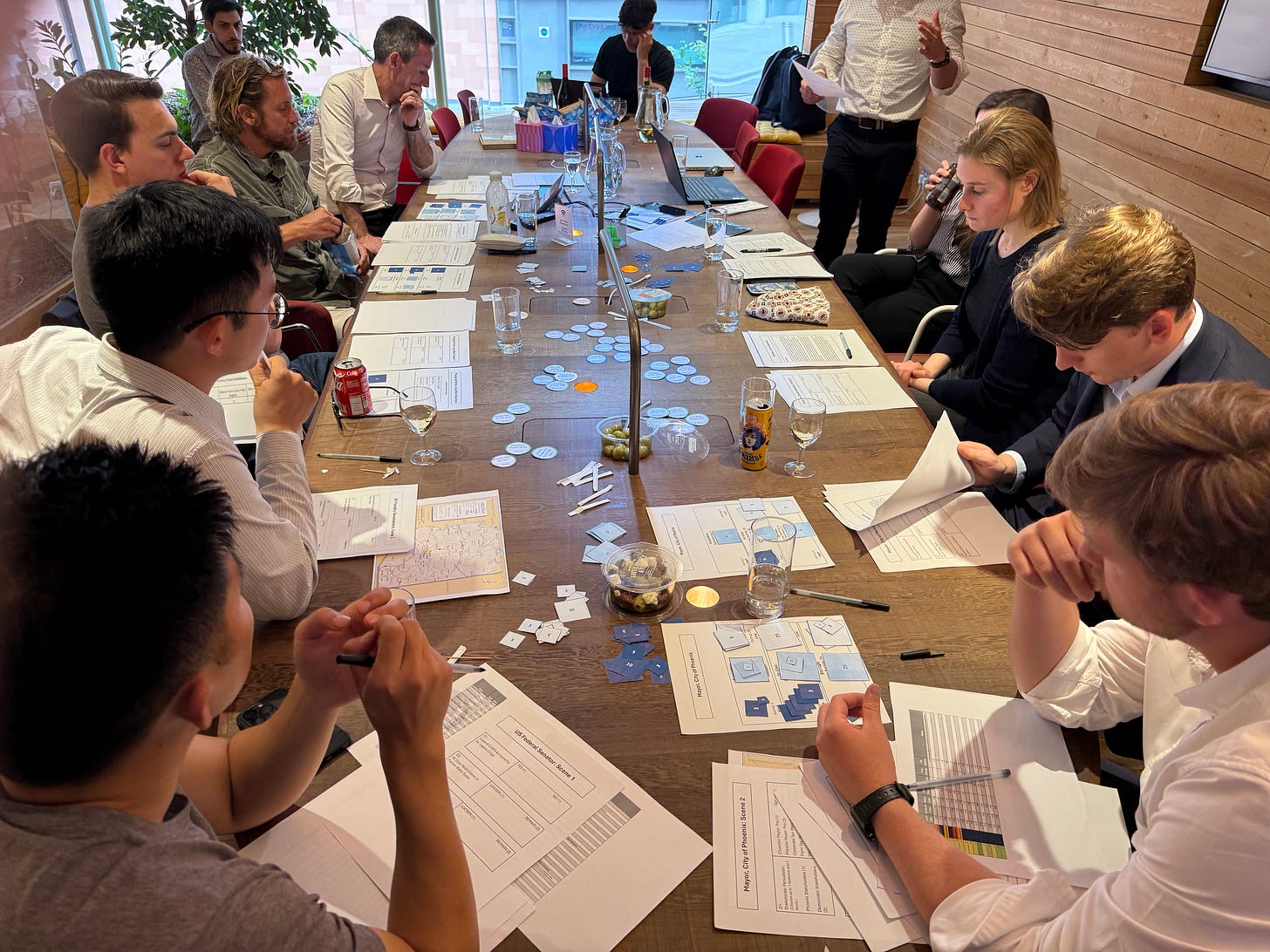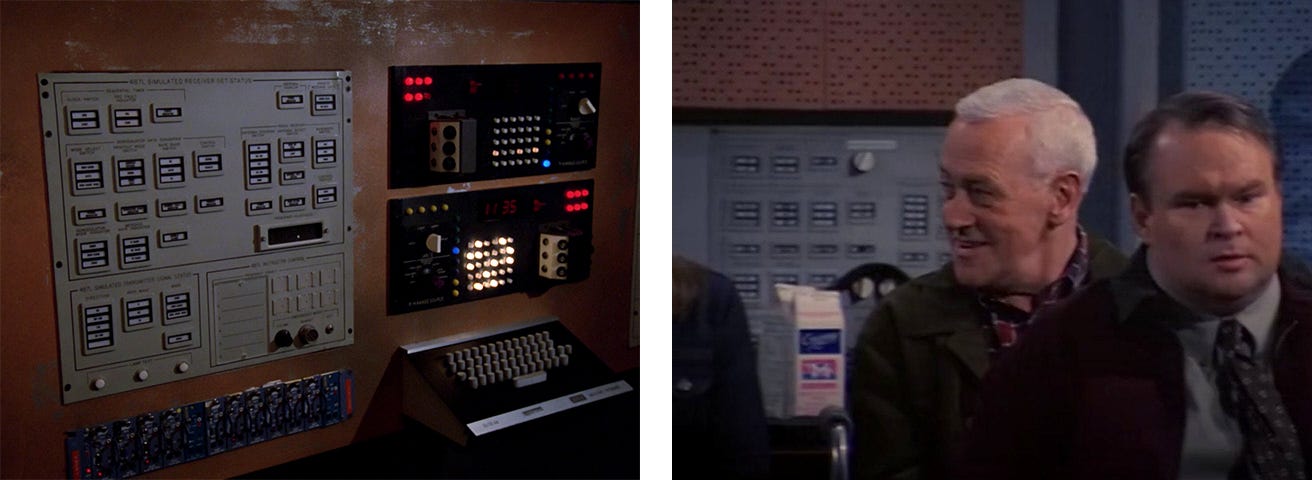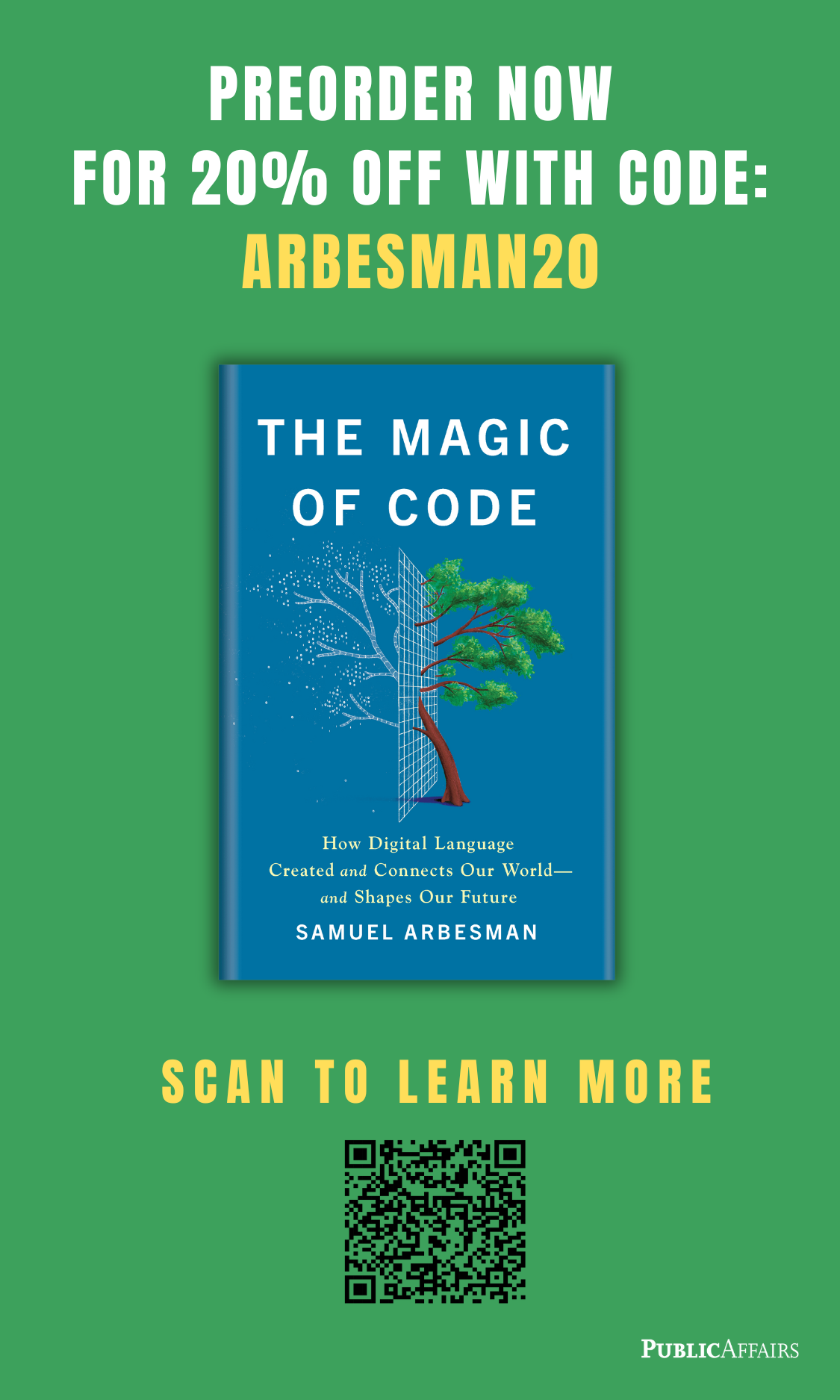Next generation pain medicine and the people who feel no pain at all, Star Trek lore, and a series of photographs of the insides of musical instruments. Plus my take on Palantir.
From our Riskgaming meetups
Thank you to everyone who joined our drinks gathering in Washington DC, our dinner in Pittsburgh, and the beta test runthrough of our next Riskgaming scenario, Southwest Silicon hosted by our friends at VC firm LocalGlobe. We look forward to welcoming readers next week to our New York City meetup for Sam’s book launch, which is fully booked out and closed (more information on The Magic of Code below).
We’ll have more events throughout the summer, so stay tuned.

From Lux Capital
Over at Axios, business editor Dan Primack touts Lux’s new helpline “for researchers at a crossroads, including those who haven’t viewed themselves as entrepreneurs or who feel their work is too early for commercialization.” Also on the website, Katie Fehrenbacher reports on Josh’s recent talk at Axios’ AI Summit, in which he compared the boom in data center infrastructure construction to previous bubbles, like fiber optic networking. And in an article for BiopharmaDive, Lux’s David Yang discusses falling funding in the biotech sector.
Finally, don’t forget that scientist-in-residence Samuel Arbesman’s new book, The Magic of Code, is available now for pre-order.
“In his thoughtful and immensely creative new book” (Cal Newport), Sam explores how code is more than just a technical tool, it’s a lens through which we can better understand the world. Like DNA in biology, code underlies the digital world we live in. It shapes how we communicate, build, create, and even how we think. But while code has immense potential, it can also divide, harm, and be misused — unless we understand it.
This book is a guide to seeing code not just as programming, but as a way of understanding the world.
Get 20% off when you order through PublicAffairs with code ARBESMAN20. Offer valid through June 10.
From around the web
1. No pain, all gain
Next-generation pain medications may come from an unlikely source: studies of people who feel no pain at all because of a genetic mutation. Laurence flags a piece by Rivka Galchen in the latest New Yorker on the progress of this new class of drugs.
On one visit, doctors told him about a child who worried them. They suspected that he had a genetic condition, and they were curious to get Woods’s opinion. The boy was well known as a street performer. He would stab his arms with a knife, or walk on hot coals. “And then he would come to casualty, and they would patch him up,” Woods recalled being told. He was usually brought in by his overwhelmed mother, who wished that she could talk some sense into him. The boy said that he couldn’t feel pain. Woods agreed to see him on his next visit to Pakistan.
2. Deep lore nine
Need a deep dive on Star Trek facts you definitely don’t already know? Sam recommends David Friedman’s recent interview with Star Trek aficionado Jörg Hillebrand.
You know how sometimes you’re watching an old episode of Star Trek: The Next Generation and there’s a quick shot of a control panel on a spaceship and you’re like, “Wait a minute. Haven’t I seen that control panel before in the background of an episode of Frasier?”

3. Hurt so good
A little over three years ago, it looked like Russia was on the verge of financial collapse — and that a new round of sanctions might push it over the edge. Sanctions backfired. Our editor Katie Salam liked this piece by Luis Garicano on why.
The mix created an unfortunate dynamic. Thanks to spiking energy prices, Russia was flooded with a record amount of cash — over $35 billion a month. Our sanctions ensured they could not spend it. The resulting record current account surplus stabilized the financial system when our financial sanctions were trying to wreck it.
4. Canon in DSLR
Finally, I’d direct you toward an interview with Charles Brooks and his series of photographs in Digital Photography Review. Charles uses scope photography to capture the insides of musical instruments.
His unique way of photographing the instruments is part artistic and part documentary. He’s photographing some of the finest instruments in the world. While they may look the same on the outside, with finely polished finishes and pristine surfaces, inside is a historical record. His photographs reveal the maker’s marks, repairs, signatures and imperfections from use or cleaning the instruments.








